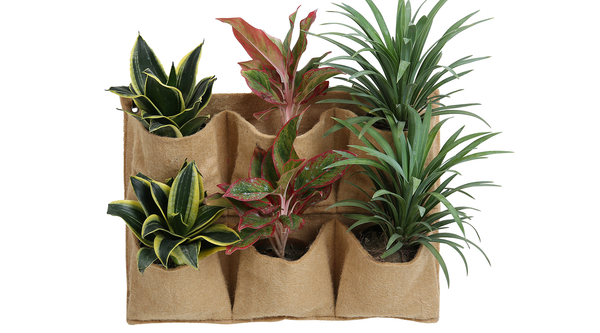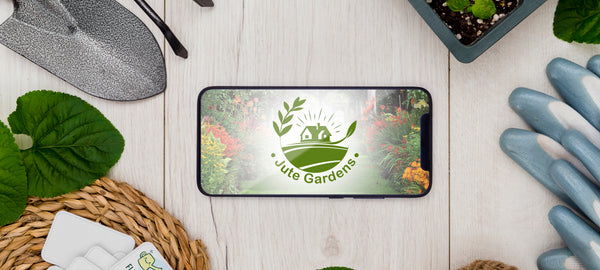
Succulent Vertical Garden: Low-Maintenance
Vertical gardening is a popular trend that allows gardeners to grow plants in a small space, vertically. This method of gardening is perfect for those who want to add greenery to their home or office without taking up too much space. However, not all plants are suitable for vertical gardening. In this article, we will explore the question of whether succulents can be grown in a vertical garden, and how to set up and maintain a vertical succulent garden.
What Are Succulents?
Succulents are a type of plant that store water in their leaves, stems, or roots. This allows them to survive in arid conditions, making them an ideal choice for those who want to add greenery to their home or office but do not have a green thumb. Succulents are also popular for their unique shapes, textures, and colors, making them an attractive addition to any garden.
Succulent Vertical Garden
However, not all succulents are good for vertical gardening. Succulents need specific conditions to thrive, such as bright, indirect light, good drainage, and well-draining soil. A vertical garden can provide these conditions by exposing the succulents to more light and allowing water to drain away more easily.
Suitable Succulents
Several succulents are well-suited for vertical gardening, such as a string of pearls, a string of bananas, and a burro's tail. These succulents have long, trailing stems that can be trained to grow up a vertical surface, providing a lush, green wall of foliage. Other succulents such as Aeonium, Crassula, and Sedum also make great choices for vertical gardening.
Click here for an article about succulents.
Instructions
Setting up a pocket garden is relatively easy and can be done with a few basic materials. You will need a garden, such as the one from Jute Gardens. Fill the pockets with a well-draining soil mix and insert the succulents. If planting indoors, you may want to add the succulents in the pots that they came in to avoid leakage.
How To Pick Your Succulents
When choosing and arranging succulents in a vertical garden, it's important to consider the size and shape of the succulents. A string of pearls and a string of bananas, for example, are best grown at the top of the frame, where they can hang down and create a curtain of green. Aeonium, Crassula, and Sedum, on the other hand, are best grown in the middle of the frame, where they can create a more full, lush look.
Maintenance
Maintaining a vertical succulent garden is relatively easy. Succulents do not require a lot of water, and weekly watering is usually sufficient. However, it's important to make sure that the soil is well-draining and that the succulents are not sitting in water, as this can lead to root rot. In addition, succulents do not require a lot of fertilizer, and a monthly dose of fertilizer is usually sufficient.
Prevent Pests and Diseases
To prevent pests and diseases, it's important to keep the succulents clean and dry. Regularly remove any dead leaves or stems, and make sure that the succulents are not overcrowded. Pruning and propagation can also help to keep the succulents healthy. To prune, simply snip off any dead or damaged leaves or stems. To propagate, simply remove a stem or leaf from the parent plant and place it in a well-draining soil mix.
In conclusion, succulents can be grown in a vertical garden, and are a great choice for those who want to add greenery to their home or office but do not have a lot of space or a green thumb. Succulents are hardy plants that store water in their leaves, stems, or roots, making them able to survive in arid conditions. They are also popular for their unique shapes, textures, and colors, making them an attractive addition to any garden.
Frequently Asked Questions
Q: What are succulents and why are they good for vertical gardening?
A: Succulents are a type of plant that store water in their leaves, stems, or roots, allowing them to survive in arid conditions. They are also popular for their unique shapes, textures, and colors, making them an attractive addition to any garden. Because they are hardy and require little maintenance, succulents are a great choice for vertical gardening.
Q: What are some examples of succulents that are good for vertical gardening?
A: A string of pearls, a string of bananas, burro's tail, Aeonium, Crassula, and Sedum are some examples of succulents that are good for vertical gardening. These succulents have long, trailing stems that can be trained to grow up a vertical surface, creating a lush, green wall of foliage.
Q: How often should I water my vertical succulent garden?
A: Succulents do not require a lot of water, and weekly watering is usually ok. However, it's important to make sure that the soil is well-draining and that the succulents are not sitting in water, as this can lead to root rot.
Q: How often should I fertilize my vertical succulent garden?
A: Succulents do not require a lot of fertilizer, and a monthly dose of fertilizer is usually ok.
Q: How do I prevent pests and diseases in my vertical succulent garden?
A: To prevent pests and diseases, it's important to keep the succulents clean and dry. Regularly remove any dead leaves or stems. Make sure that the succulents are not overcrowded.
Q: Can I grow succulents in a vertical garden?
A: Yes, you can grow succulents in a vertical garden. Remove a stem or leaf from the parent plant and place it in a well-draining soil mix.

